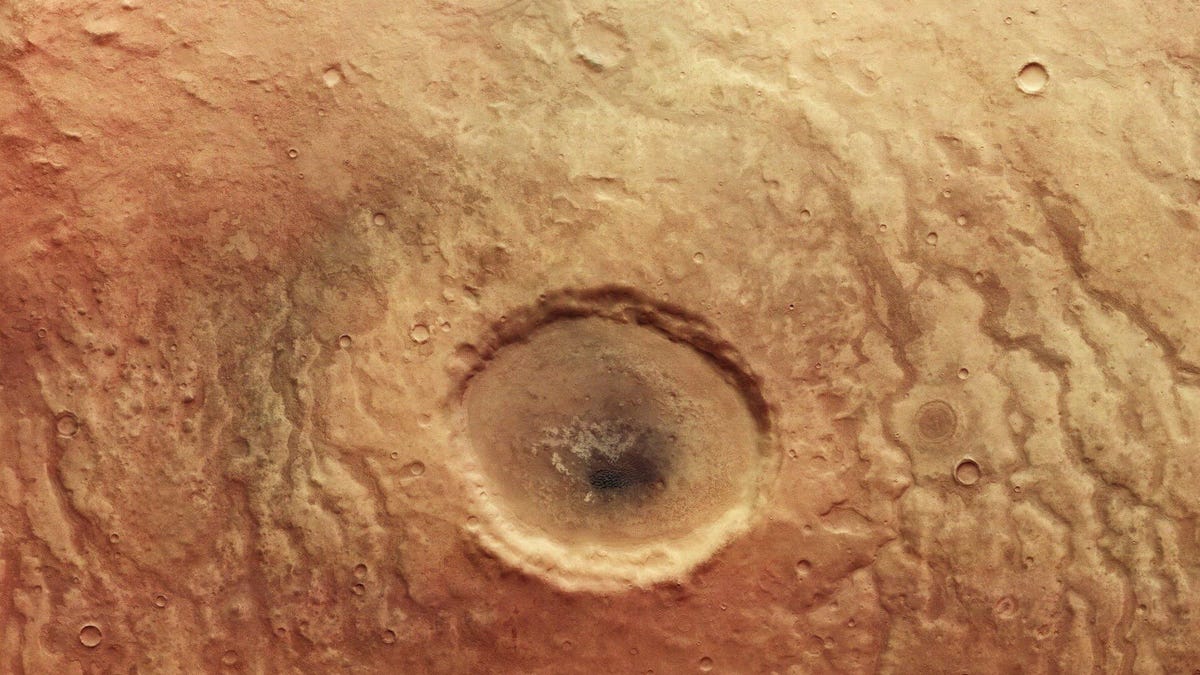ESA Mars Spacecraft Snaps Dramatic Crater That Looks Like a Human Eyeball
Here's looking at you, Mars.
The European Space Agency sounded like it was going to write a sci-fi horror film when it issued a statement on Wednesday titled "Mars sleeps with one eye open." The lead image features a crater surrounded by winding channels. Between the round crater and the vein-like channels, ESA took the imaginative leap of suggesting it looks like a human eyeball.
The space agency's Mars Express spacecraft captured the view of a crater-filled region called Aonia Terra in late April. ESA said the channels in the image were likely conduits for liquid water around 3.5-4 billion years ago.
A lot can be learned from an image like this. The different colors and shapes are geologic clues. "Inside the crater, a dark dune field rests on a lighter surface. Upon closer inspection, it becomes apparent that the crater is filled with more buttes and cone-shaped hills. These are evidence that many different materials accumulated inside the crater," said ESA.
ESA also shared a color-coded topographic image. Blues and purples denote lower areas while higher altitudes are in reds and whites. The crater, which is mostly blue, is about 18.6 miles (30 kilometers) wide.
The colors in this image make the topography of this area of Mars stand out. The blue crater is lower while areas in red and white are higher in altitude. A color scale in the upper right corner shows the gradations.
Mars Express has been in residence at the red planet since 2003. It studies Mars' atmosphere, geology and environment, and also sometimes sends back wonderfully weird landscape images. This one can join the Pac-Man crater and the red velvet cake crater on my unofficial list of goofy Martian craters.


